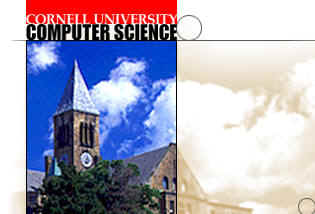 |
CS
501 Project Concepts Cornell Institute for Digital Collections |
 |
CS
501 Project Concepts Cornell Institute for Digital Collections |
The Cornell Institute for Digital Collections is based in the Cornell University Library. Peter Hirtle, the Director, has proposed three projects:
You can select the technical environment for these project in conjunction with the clients.
William Y. Arms
(wya@cs.cornell.edu)
Last changed: January 22, 2002